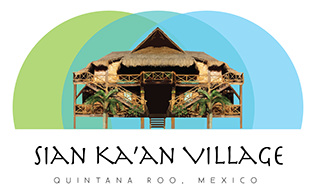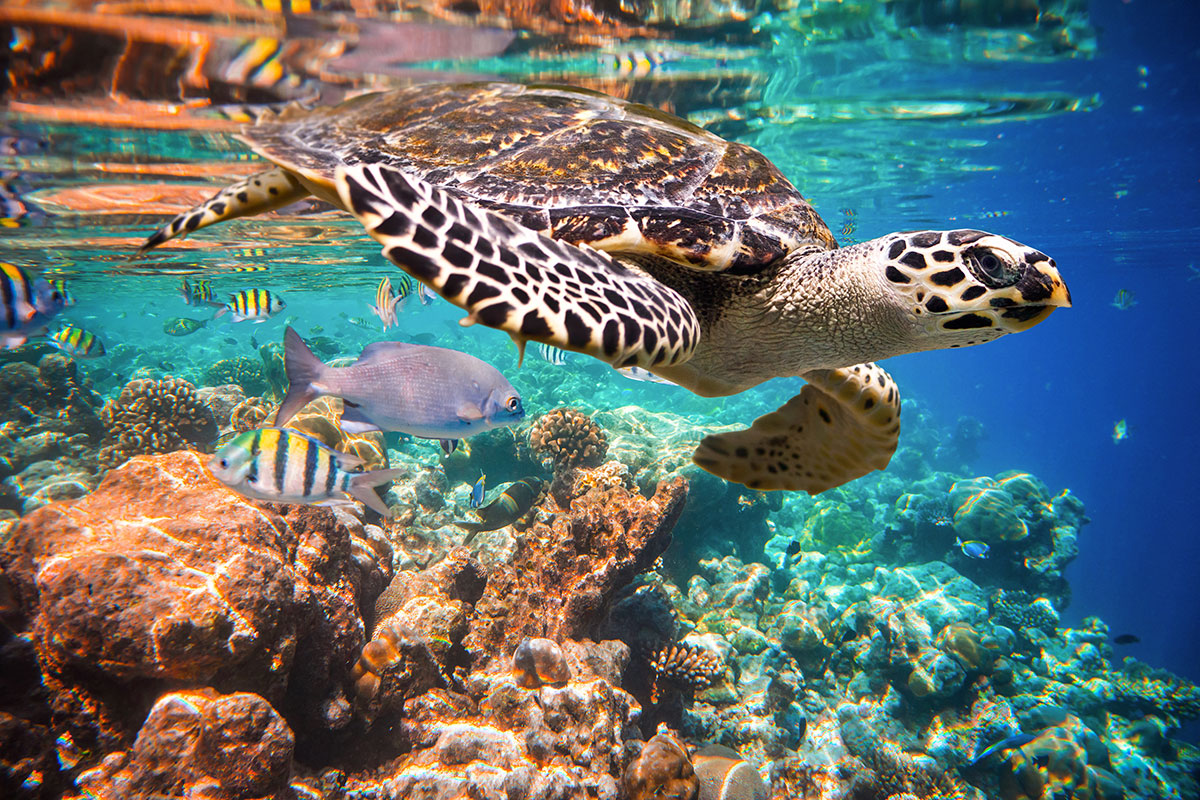By far one of the most beloved and enchanting animals to roam the open waters is the sea turtle. The awe-inspiring beaches along Mexico’s Yucatan Peninsula, and those within the protected Sian Ka’an Biosphere Reserve in particular, are important nesting areas for sea turtles including green turtles, hawksbill turtles and loggerheads.
Nesting Turtles in the Sian Ka’an Biosphere
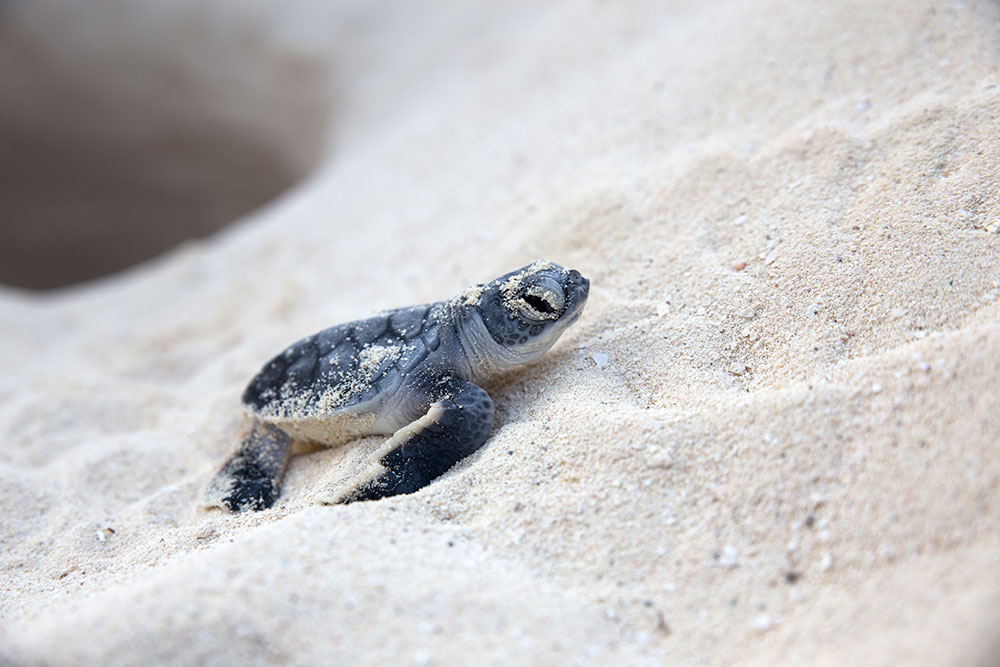
The ancient ritual of female turtles returning to the very beaches where they were born (sometimes migrating more than 1,000 arduous miles in order to arrive there from their feeding grounds) is not only fascinating, it is an essential part of the survival of their species. The mothers are driven by pure natural instinct to nest upon the shores where they hatched, dragging their heavy bodies ashore and carefully digging a nest, laying their eggs and then returning to the sea.
How Turtles are Being Protected in Sian Ka’an
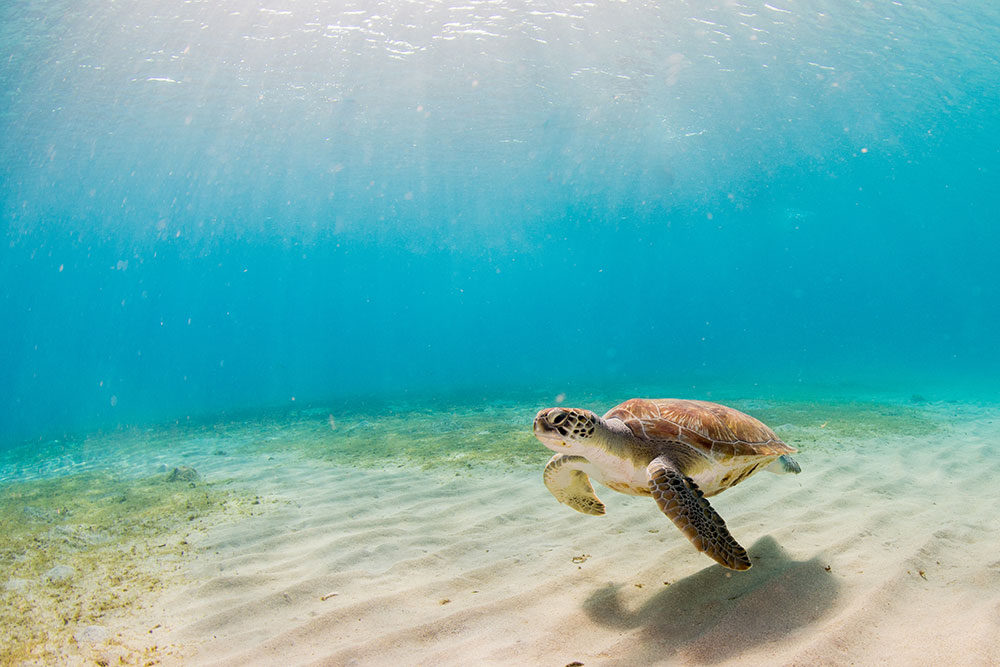
Sadly, all sea turtle species are now endangered; however there are measures being taken to ensure that the next generations will thrive. It is illegal in Mexico to disrupt or hunt sea turtles or their eggs. During the summer nesting season, a dedicated group of individuals including biologists and countless volunteers do whatever they can to keep the nesting mothers and their fragile turtle eggs safe. The region is home to a turtle conservation campaign that includes patrolling along the beaches in areas like the Sian Ka’an Biosphere Reserve at night to keep watch for mother turtles emerging from the water to dig their nests. These efforts help keep the eggs safe from poachers as well as predators that include crabs, dogs, racoons and seabirds.
When mother turtles are spotted, they are left alone to dig their nests; when they begin laying eggs, they are sometimes tagged and measured before returning to the sea. The collection of eggs, called a clutch, can contain between 80 and 200 eggs which are collected and transferred to a special protected area where a new nest is built to resemble the original one. These nests are carefully guarded until the eggs begin to hatch, which is typically between 45 and 60 days after being laid. The individuals in charge of these guarded areas, as well as lucky volunteers and tourists, help ensure the baby turtles make it safely down the beach to the water where they will begin their journey through life. With so many potential threats and hazards, most baby turtles unfortunately do not reach adulthood; those that do will hopefully return in 12 to 15 years to the Yucatan Peninsula to lay their own eggs.
How You Can Help
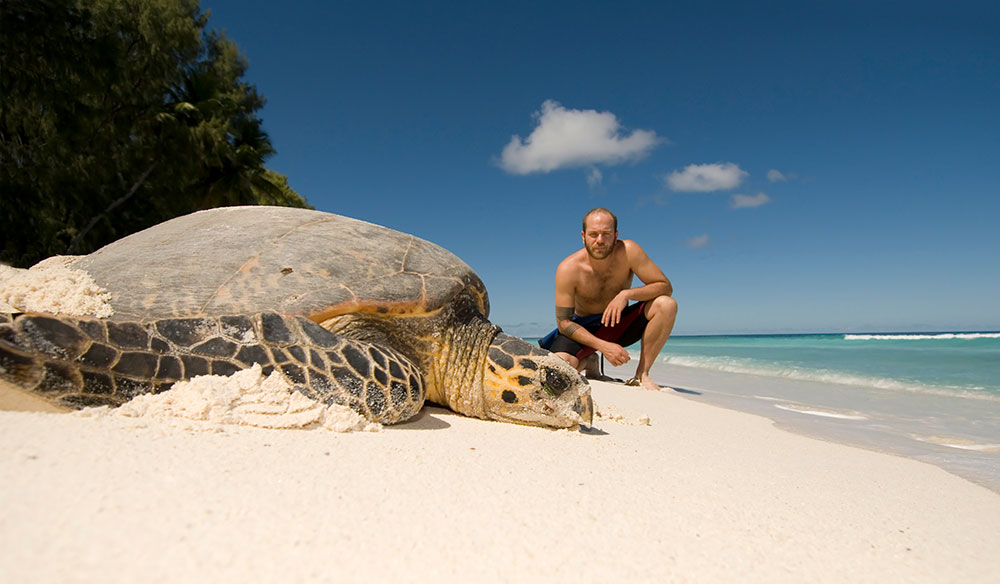
If you are visiting the Sian Ka’an Biosphere Reserve during turtle season, you can follow some simple rules to make sure you help keep them safe. When you encounter a turtle on the beach, let local authorities know as soon as possible. Remain as still and quiet as you can and maintain a safe distance so the turtle does not feel threatened. Do not approach the turtle or try to touch it, and refrain from shining any light in its direction; likewise, do not use a flash if you take any pictures. Sea turtles are extremely sensitive to noise, movement, artificial light and objects such as beach furniture that do not belong in their natural environment. They will often return to the water out of instinct and fear, laying their eggs at sea, so do what you can to make coming ashore a pleasant experience for them.
